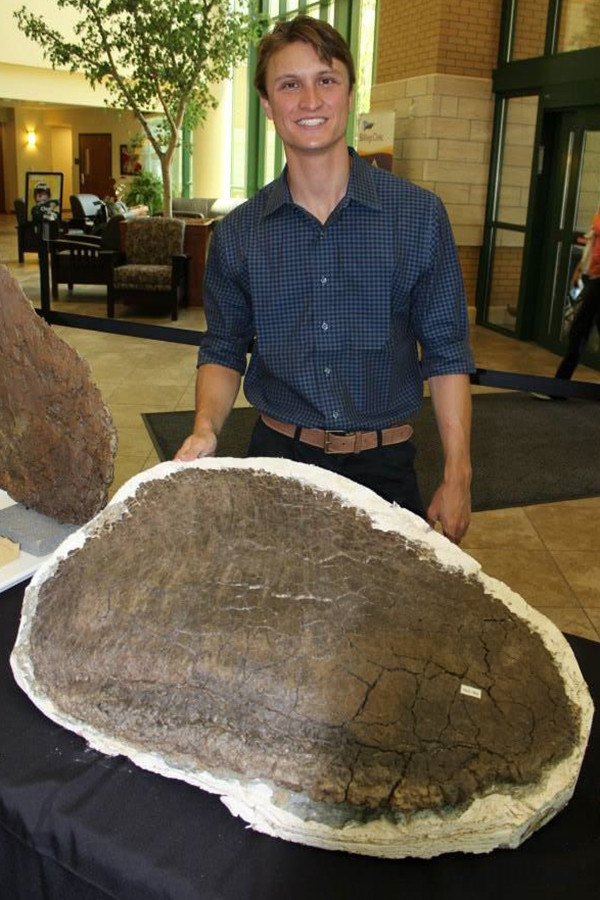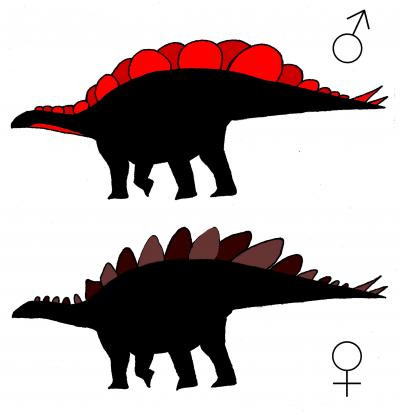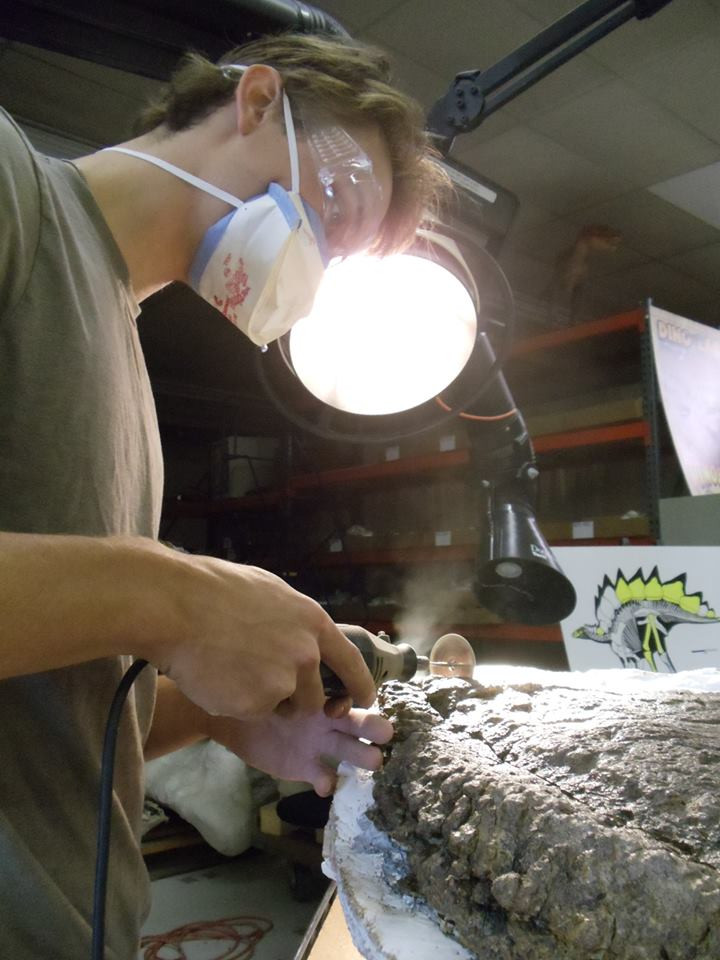Stegosaurus males and females identified for first time through large plates

Stegosaurus males and females can be identified through the size of the bony plates along their backs, with males being far larger, researchers have discovered.
The team found male plates were up to 45% larger than that of females, with scientists believing they were used as a display to attract females and to fight of competing males.
The findings, published in the journal PLOS One, examined the species Stegosaurus mjosi. They lived about 150 million years ago in the Late Jurassic period in the western United States.
Until now, sexual dimorphism in dinosaurs has been extremely difficult to show. Despite a number of claims purporting to show sexual differences, current researchers say they are too inconclusive to rule out other possible explanations for differences in anatomy.
For example, two individuals might be separate species, they could be a young or elderly individual – or they are male and females.

University of Bristol researchers found some stegosauruses had tall wide plates, while others were not so tall. The tall-plated individuals, they say, are not two distinct species but are males and females.
Evan Saitta spent six months in central Montana excavating the first ever stegosaurus graveyard. He then tested all the possible explanations for the differences.
The species lived together and the only differences were the size of their plates. Also two of the fossils showed bone tissues had stopped growing – neither was still in the process of getting any bigger – this meant the only explanation was that one was male and one was female.
The group of dinosaurs excavated in Montana demonstrated the coexistence of individuals that only varied in their plates. Other skeletal differences indicating separation of ecological niches would have been expected if the two were different species.

Saitta said: "As males typically invest more in their ornamentation, the larger, wide plates likely came from males. These broad plates would have provided a great display surface to attract mates. The tall plates might have functioned as prickly predator deterrents in females.
"These stegosaurs seem to provide the first really convincing evidence for sexual dimorphism in a dinosaur species [excluding birds, which are technically dinosaurs themselves]."
Speaking to IBTimes UK, he added: "I believe the stegosaurs I studied provides the best evidence of sexual dimorphism in any dinosaur species to date."
© Copyright IBTimes 2025. All rights reserved.






















